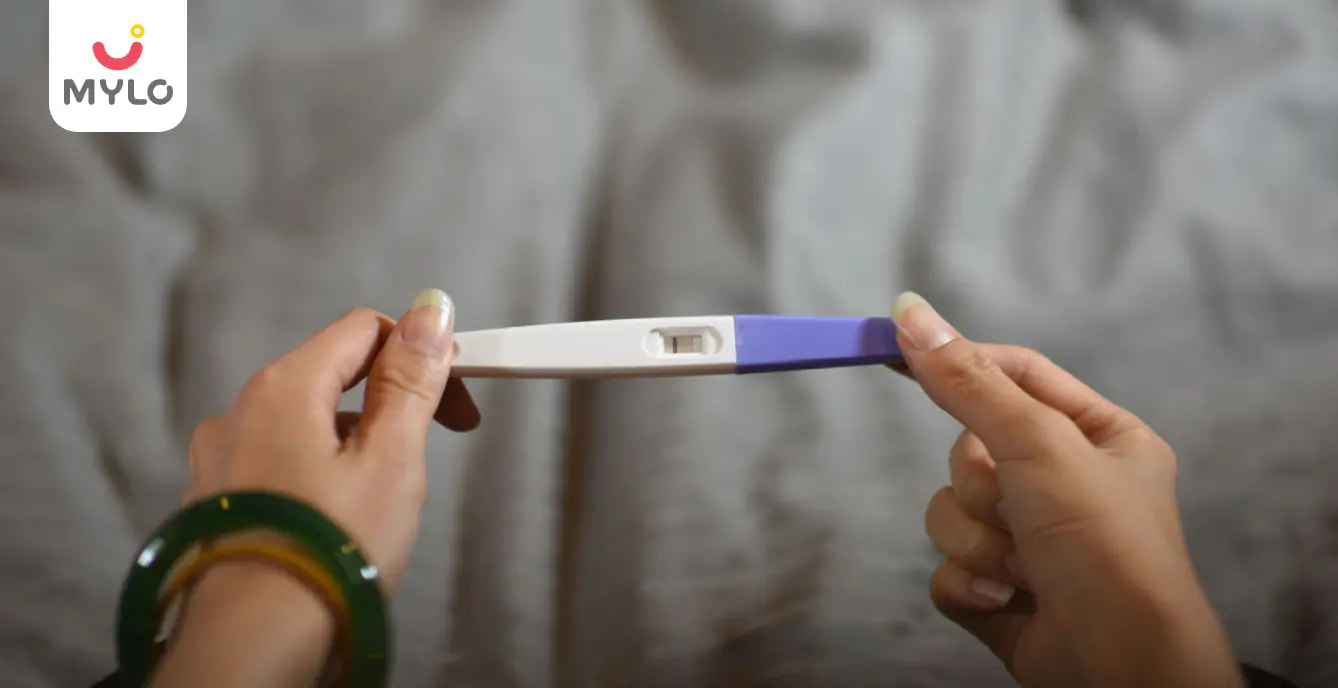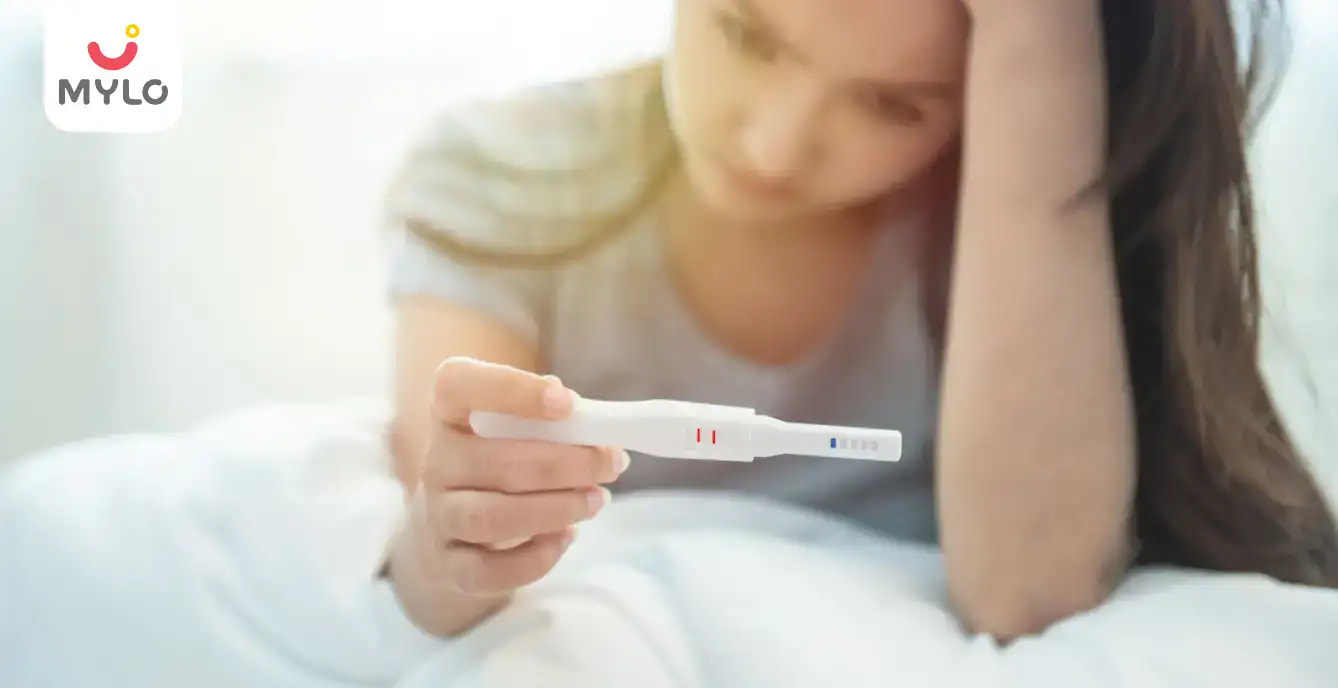Home

Pregnancy Tests

How to Confirm Pregnancy at Home: A Step-by-Step Guide for Women
In this Article

Pregnancy Tests
How to Confirm Pregnancy at Home: A Step-by-Step Guide for Women
Updated on 3 November 2023
Are you eagerly waiting to find out if you're expecting? Well, you've come to the right place! In this article, we're going to walk you through a step-by-step guide on how to confirm pregnancy at home. Whether you're experiencing some early signs or are just curious about what's going on with your body, we've got you covered.
So, grab a cup of tea, sit back, and get ready to embark on this exciting journey of self-discovery. Let's dive in and unravel the mysteries of pregnancy testing from the comfort of your own home!
Signs of Early Pregnancy
Before taking a home pregnancy test, it is important to be aware of the common signs and symptoms of early pregnancy. While these may vary from woman to woman, the following signs are often indicative of pregnancy:
1. Missed Period
The most common sign of pregnancy is a missed period. If your menstrual cycle is regular and you have missed your period, it could be a strong indication that you are pregnant.
2. Breast Changes:
Hormonal changes during pregnancy can cause breast tenderness, swelling, and darkening of the nipples.
3. Frequent Urination:
Increased blood flow to the pelvic region and hormonal changes can lead to frequent urination.
4. Fatigue:
Feeling tired and exhausted more than usual is another common sign of early pregnancy.
5. Nausea and Morning Sickness:
Many women experience nausea, vomiting, and aversion to certain smells during the early stages of pregnancy.
While experiencing one or more of these signs does not guarantee pregnancy, if you are experiencing a combination of these symptoms, it may be time to take a pregnancy test at home with kit.
When to take a home pregnancy test
The timing of taking a home pregnancy test is crucial for accurate results. Most tests are designed to detect the presence of the pregnancy hormone, human chorionic gonadotropin (hCG), in the urine. However, hCG levels are not immediately detectable after conception. It typically takes about one to two weeks after conception for hCG levels to be high enough for a home pregnancy test to provide accurate results. Therefore, it is recommended to wait until after the missed period to take a test, as this increases the chances of obtaining reliable results.
Types of home pregnancy tests
There are several types of home pregnancy tests available on the market. The most common ones include:
1. Test strips
Test strips are usually the most affordable option and require the user to collect urine in a cup and dip the strip into the sample.
2. Midstream tests
Midstream tests are similar to test strips but they are even more convenient to use. They allow the user to hold the test directly in the urine stream.
3. Digital tests
Digital tests provide a clear "pregnant" or "not pregnant" result displayed on a digital screen. The choice of test depends on personal preference and budget.
How to confirm pregnancy at home?
To ensure accurate results, it is essential to follow the instructions provided with the home pregnancy test kit. Generally, the process involves collecting a urine sample in a clean container, dipping the test strip into the urine or holding the midstream test in the urine stream, and waiting for the recommended time before reading the results.
It is important to note that different tests may have slightly different instructions, so it is crucial to read and follow them carefully.
How to interpret the results of a home pregnancy test?
When you take a pregnancy test at home with kit, the results can be indicated through the appearance of lines or symbols. Understanding these results is crucial for accurate interpretation. Here are the most common result scenarios:
1. Two Lines
The presence of two lines, regardless of their intensity, usually indicates a positive result, meaning that the woman is likely pregnant. It is important to note that even a faint second line should be considered positive.
2. Single Line
A single line typically indicates a negative result, suggesting that the woman is not pregnant. However, it is recommended to retest after a few days to ensure the accuracy of the result, especially if the period is still missing.
3. Faint Line
In some cases, a faint line may appear instead of a clear second line. This might indicate a positive result, but it is advisable to retake the test after a few days to confirm the pregnancy, as the hCG levels may not be sufficiently high yet.
How to confirm pregnancy in first month?
Confirming pregnancy in the first month can be done through various methods. In addition to using a home pregnancy test, women can also look out for other signs such as implantation bleeding, elevated basal body temperature, and changes in cervical mucus.
However, it is important to note that these signs are not as reliable as a home pregnancy test and should be used as supplementary information. For a definite confirmation, it is recommended to consult a healthcare professional.
How to confirm pregnancy for irregular periods?
Women with irregular periods may face challenges in confirming pregnancy accurately. Irregular cycles can make it difficult to determine when to take a home pregnancy test. In such cases, it is advisable to wait for the longest possible cycle and test after that time has passed. If there is still uncertainty or doubt, consulting a healthcare professional can provide further guidance and support.
You may also like : When Should You Take A Pregnancy Test With Irregular Periods?
Alternative methods to confirm pregnancy
While home pregnancy tests are the most common method of how to confirm pregnancy at home, there are alternative methods that can be used for additional confirmation. These methods include blood tests, which can detect hCG levels earlier than urine tests, and ultrasound scans, which can visualize the presence of a pregnancy. These alternative methods are usually performed by healthcare professionals and can provide more accurate and detailed information about the pregnancy.
When to see a doctor for confirmation of pregnancy
If a home pregnancy test indicates a positive result or if there is uncertainty about the test results, it is advisable to make an appointment with a healthcare professional for confirmation. A doctor can perform further tests, such as a blood test or ultrasound, to confirm the pregnancy and provide appropriate guidance and care throughout the pregnancy journey.
Conclusion
By understanding how to confirm pregnancy at home, understanding the signs of early pregnancy, knowing when to take a home pregnancy test, and following the proper procedure, women can obtain accurate results in the comfort of their own homes. It is important to interpret the test results correctly and seek professional confirmation if necessary. Remember, a home pregnancy test is just the first step towards the beautiful journey of motherhood.
References
1. Gnoth C, Johnson S. (2014). Strips of Hope: Accuracy of Home Pregnancy Tests and New Developments. Geburtshilfe Frauenheilkd. NCBI
2. Kennedy CE, Yeh PT, Gholbzouri K, Narasimhan M. (2022).Self-testing for pregnancy: a systematic review and meta-analysis. BMJ Open. NCBI
Popular Articles:
How To Test Pregnancy At Home With Kit | How To Use Pregnancy Test Strip | How To Check Pregnancy At Home With Fingers | How To Check Pregnancy At Home Without Kit
Trending Articles:
How To Self Check Baby’s Heartbeat During Pregnancy At Home | After How Many Days Of Sex We Can Check Pregnancy | How Often To Check Thyroid Levels During Pregnancy | How To Check Pregnancy By Pulse



Written by
Priyanka Verma
Priyanka is an experienced editor & content writer with great attention to detail. Mother to an 11-year-old, she's a ski
Read MoreGet baby's diet chart, and growth tips

Related Articles
Related Questions
Influenza and boostrix injection kisiko laga hai kya 8 month pregnancy me and q lagta hai ye plz reply me

Hai.... My last period was in feb 24. I tested in 40 th day morning 3:30 .. That is faint line .. I conculed mylo thz app also.... And I asked tha dr wait for 3 to 5 days ... Im also waiting ... Then I test today 4:15 test is sooooo faint ... And I feel in ma body no pregnancy symptoms. What can I do .

Baby kicks KB Marta hai Plz tell mi

PCOD kya hota hai

How to detect pcos

RECENTLY PUBLISHED ARTICLES
our most recent articles

Diet & Nutrition
গর্ভাবস্থায় আলুবোখরা: উপকারিতা ও ঝুঁকি | Prunes During Pregnancy: Benefits & Risks in Bengali

Diet & Nutrition
গর্ভাবস্থায় হিং | ঝুঁকি, সুবিধা এবং অন্যান্য চিকিৎসা | Hing During Pregnancy | Risks, Benefits & Other Treatments in Bengali

Women Specific Issues
স্তনের উপর সাদা দাগ: লক্ষণ, কারণ এবং চিকিৎসা | White Spots on Nipple: Causes, Symptoms, and Treatments in Bengali

Diet & Nutrition
গর্ভাবস্থায় পোহা: উপকারিতা, ধরণ এবং রেসিপি | Poha During Pregnancy: Benefits, Types & Recipes in Bengali

Diet & Nutrition
গর্ভাবস্থায় মাছ: উপকারিতা এবং ঝুঁকি | Fish In Pregnancy: Benefits and Risks in Bengali

Diet & Nutrition
গর্ভাবস্থায় রেড ওয়াইন: পার্শ্ব প্রতিক্রিয়া এবং নির্দেশিকা | Red Wine During Pregnancy: Side Effects & Guidelines in Bengali
- ইনার থাই চ্যাফিং: কারণ, উপসর্গ এবং চিকিৎসা | Inner Thigh Chafing: Causes, Symptoms & Treatment in Bengali
- গর্ভাবস্থায় ব্রাউন রাইস: উপকারিতা ও সতর্কতা | Brown Rice During Pregnancy: Benefits & Precautions in Bengali
- Velamentous Cord Insertion - Precautions, Results & Safety
- Unlock the Secret to Flawless Skin: 7 Must-Have Qualities in a Face Serum
- Unlock the Secret to Radiant Skin: How Vitamin C Serum Can Transform Your Complexion
- Gender No Bar: 10 Reasons Why Everyone Needs a Body Lotion
- Unlock the Secret to Radiant Skin How to Choose the Perfect Body Lotion for Your Skin Type
- Top 10 Reasons to Apply a Body Lotion After Every Bath
- Communication in Toddlers: Milestones & Activities
- How to Improve Vocabulary for Toddlers?
- A Comprehensive Guide to Understanding Placenta Accreta
- Vulvovaginitis in Toddlers Causes, Symptoms and Treatment
- A Comprehensive Guide to Understanding Cerebral Palsy in Children
- Bitter Taste in Mouth During Pregnancy: Understanding the Causes and Remedies


AWARDS AND RECOGNITION

Mylo wins Forbes D2C Disruptor award

Mylo wins The Economic Times Promising Brands 2022
AS SEEN IN
















- Mylo Care: Effective and science-backed personal care and wellness solutions for a joyful you.
- Mylo Baby: Science-backed, gentle and effective personal care & hygiene range for your little one.
- Mylo Community: Trusted and empathetic community of 10mn+ parents and experts.
Product Categories
baby carrier | baby soap | baby wipes | stretch marks cream | baby cream | baby shampoo | baby massage oil | baby hair oil | stretch marks oil | baby body wash | baby powder | baby lotion | diaper rash cream | newborn diapers | teether | baby kajal | baby diapers | cloth diapers |








